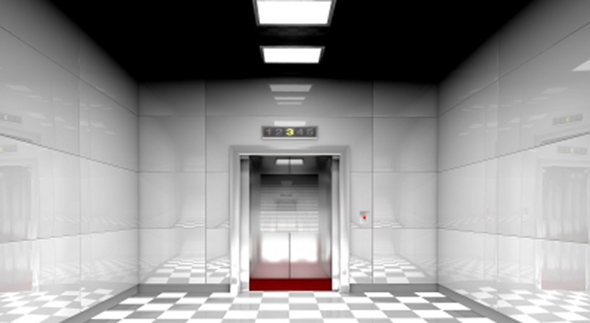I attended a conference recently where there were several hundred people in attendance. When lunch time was approaching, an announcement was made that went something like this:
Lunch will be served in the third-floor atrium. (We were on the first floor.) You will find the elevator around to your left as you exit the auditorium. The elevator is pretty big--it holds about 25 people. The stairs will be on your right.
Now, not unsurprisingly, I discovered that the vast majority of the folks barely glanced at the elevator. Instead, they headed intuitively toward the relatively narrow stairs leading upward.
But why?
The stairs were very narrow and could only handle about two people abreast as they ascended.

Why did people turn to the stairs intuitively?
I could not help but ask myself: "What made the vast majority of folks in that auditorium turn instinctively toward the stairs, instead of taking the 'easy way' via the elevator?"
Here's what I think the majority of people quickly reasoned out in their minds (although most, I'm convinced, would not have articulated it in this way):
- If I take the elevator, I will be spending far more time "waiting" than I will spend "making progress."
- If I take the stairs, I will lose less time in "waste" (waiting) and spend more time "making progress." Chances are I will get to my destination faster via the stairs than via the elevator.
Value-added versus Non-value-added time
Elevators must carry people in "batches" which means that a substantial portion of time will be spent in "wait" (non-value-added) versus in "progress" (actually riding upwards toward the destination).
When transporting a large group of people in only one direction (up or down), more than half the time on an elevator is spent in non-value-added activity. Opening and closing the doors at each end and the time required to re-position from the third floor to the first floor are non-value-added activity for the elevator's "customers."
On the other hand, the stairway, while offering transport toward the destination more slowly, operated in a continuous flow - there was no waiting. Every moment moved these folks closer to their destination. No time was wasted in the operation. Everything was value-added.
Now you see it...
When the difference between "batch" operations and "continuous flow" operations involves our persons and our personal time, we become intuitively aware of the differences - the efficiency of one and inefficiency of the other.
However, we often miss these very same principles at work in our business operations or our supply chains.
Now you don't!
In some cases, when the goods or services we produce spend more than 90 percent of their time in non-value-added queue and wait time in our production or supply chain, we may not take note of it at all.
But consider consider how much better (more profitable, more productive) it might be if we could move closer to "continuous flow" than in these operations.
We may not give credence to such thoughts for no better reason than, "We've always done it this way," or because profits are "acceptable" at present levels.
Unknowingly overlooking that both profit and cash-flow might be significantly improved if we were to consider the reduction of waste (non-value-added activity).
Taking incremental steps toward improvement
Perhaps we can't move to "continuous flow" operations immediately. Maybe we just don't see a way to get there. But there may be incremental steps you can take.
- Cut batch sizes in half starting tomorrow.
- Slash away at replenishment cycles in your supply chains.
- Base purchase agreements across your supply chain on the quantity of goods purchased over time - say, six months or a year - instead of the size of a single order (transport batch size).
- Then find ways to reduce the transport batch size and increase the replenishment frequency.
Move toward continuous flow in any way you can
Begin doing, in your own operations and across your supply chain, what you intuitively do for yourself all the time!
Remember, almost every large store and shopping mall has both elevators and escalators--as do airports, for example. Yet, I dare say that better than 99 percent of folks in these venues intuitively take the escalators (i.e., continuous flow) instead of the elevators (i.e., batch operations). They recognize it is better, faster and more efficient for them while they may deny the same "better," "faster" and "more efficient" continuous flow to the goods and services in their supply chains.
What's wrong with this picture?
Now we see it; now we don't!
Let's start "seeing it" all the time.
Agree? Disagree? Please leave your comments below.
 While You're Here ...
While You're Here ...
Grab a copy of The 8 Sins of ERP Project Failure.
This free guide provides insights about how to avoid common mistakes and ensure a successful ERP implementation.
Image Credit: Salvatore Vuono | Freedigitalphotos.net



